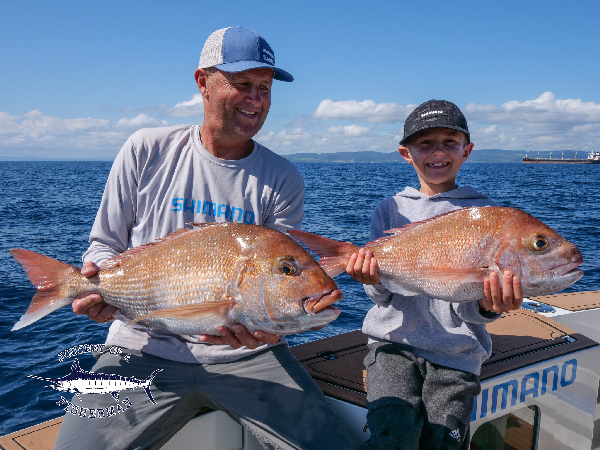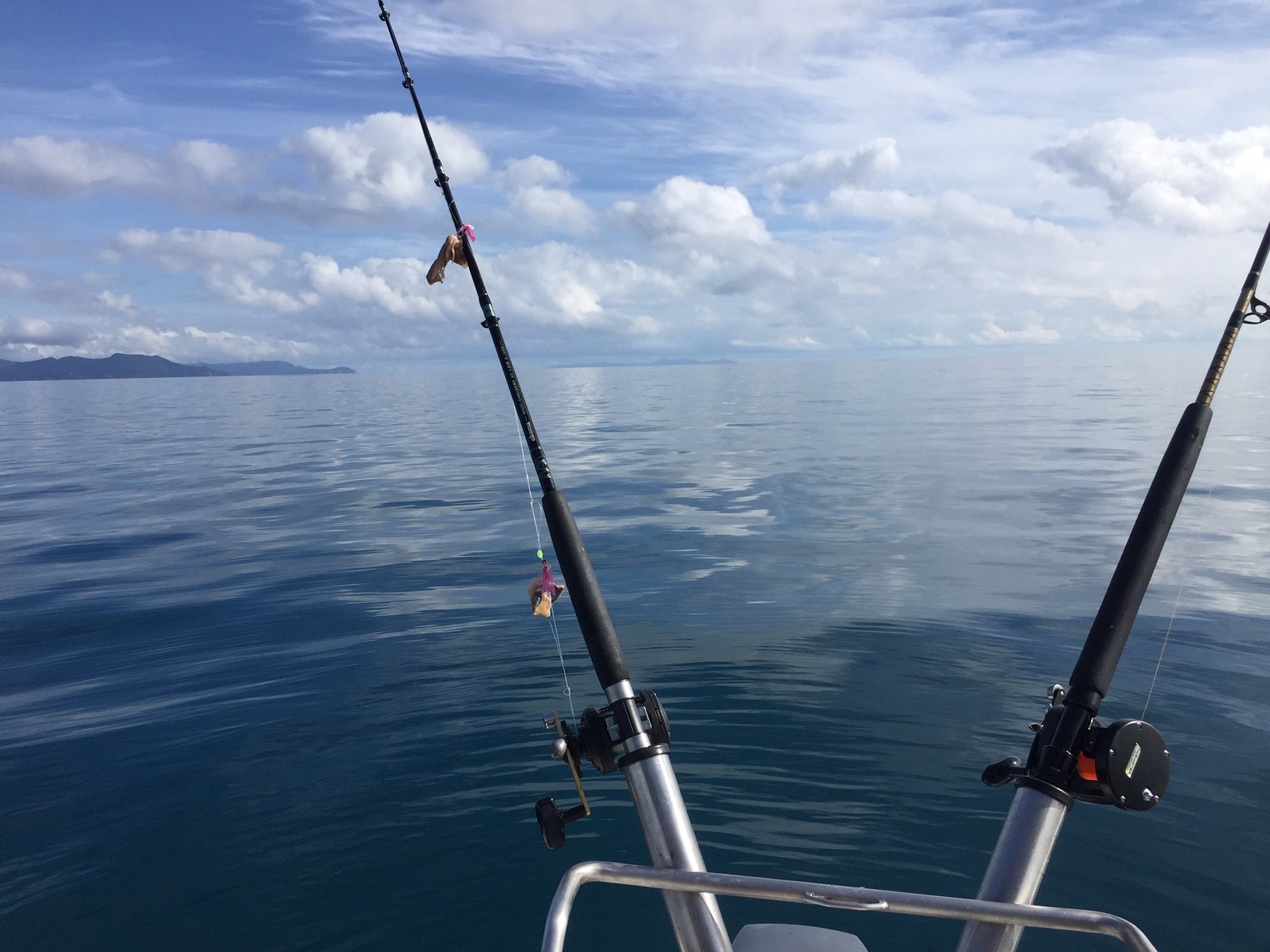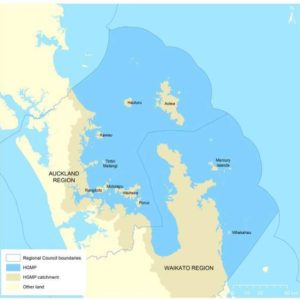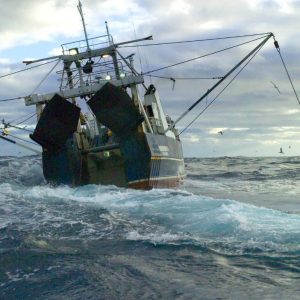In April 2022 Tony Orton, from Offshore Adventures, was nominated to be a part of the Hauraki Gulf Fisheries Plan Advisory Group. In February 2023 he resigned in disgust. You can read his resignation letter below with details of his experience.
—

In early 2022, I was appointed to the advisory group helping to establish the Hauraki Gulf Fisheries Plan with the objective of restoring marine ecosystems in the Hauraki Gulf Marine Park (HGMP).
I was humbled, nervous and deeply excited about this opportunity to represent charter operators and recreational fishers. I was looking forward to bringing my practical experience to the table and sharing my lifetime of experience and passion for marine conservation. I envisaged helping change some contentious aspects of the Plan to make it more cohesive, to protect our beloved Hauraki Gulf and give all users a sense of ownership, pride and togetherness.
However, since the first meeting in 2022 my excitement has turned to sleepless nights and a sense of helplessness at the way a predetermined outcome is being forced on us by officials. There has been very little regard for the effects on the livelihoods and the wellbeing of thousands of people who enjoy time in our Marine Park as well as the long-term effects from the current plan that is proposed or already predetermined.
The initial plan was for the group to meet once a month for the first quarter and then once every quarter after this. At the first meeting we were given an overview presentation on the draft plan and told that we would have one meeting to discuss the plan before plan was sent out for public consultation. The officials did not appear at all to want the Advisory Group’s criticism of the draft plan and input into how it could be improved, and this is how it played out at later meetings.
The sticking point for me is the way the planning and the “process” is happening and the end result that has me deeply concerned for the well-being and future of the Hauraki Gulf and the people of New Zealand and international tourists that use it.
I feel the way the plan is being pushed through is undemocratic and pushing the boundaries of a preconceived outcome with disregard to pure public consultation. The plan looks more like a chart with a bunch of band-aids stuck on it to keep Iwi and commercial fishing interests happy and throw a bunch of no-take marine reserves in some out of the way areas to keep certain groups and agendas happy with the least amount of public damage.
There are some key points that members of the group have raised that have been quickly dismissed and shut down by Fisheries New Zealand. I feel they should have been researched and given the time and energy they deserve, as these points will highly likely be the tipping point of whether this plan sinks or swims.
Key points that I feel have been dismissed are:
- Making the Hauraki Gulf Marine Park its own fisheries management area and pulling away from the large FMA’s that are clearly not working. This is going to be a critical tool to manage the HGMP into the future and the amount of fish that is extracted. Except for vague references to seeking voluntary removal agreements Fisheries New Zealand have not been able to explain at all how they will manage the amount of fish extracted from the Park by the commercial sector while it remains as part of quota in the massive FMA 1.
- Putting a timeline on removing destructive fishing techniques like commercial scallop dredging, bottom trawling and purse seining out of the HGMP. The original Sea Change plan had this and was agreed upon by stakeholders, yet now it is not an option and I struggle to see how a modern marine park could function with destructive fishing techniques still operating within its boundaries. It is a little one sided when the proposed plan will ban recreational scallop dredging yet has no desire to put a time line on phasing out commercial scallop dredging.
- Trawling corridors. The word “corridors” alone is misleading to the public and after seeing the initial ideas for these proposed corridors these “Large Areas” are nothing more than existing high-value commercial take areas that will remain so nothing changes. I understand this is still a work in progress but fail to agree that there is a place in a marine park for such destructive fishing techniques and the wording “corridors” is clearly a way to mislead the public.
I struggled to see how this process is democratic and represents the best interests for the HGMP and the people of New Zealand. From the outset, we were shown a timeline of exactly how the process would be rolled out. Any constructive changes like those listed above were quickly shut down. We have been kept at arm’s length from talking with Iwi. And to be brutally fair, you have had the wisdom, knowledge and professional services from three very smart people that are on the Advisory Group to help Fisheries NZ clean up and sugarcoat a very sloppy Fisheries NZ Hauraki Gulf Fisheries Plan with no meaningful changes made except legal terminology and grammar proving that Fisheries NZ cannot even get this right. I struggle to see how “Public Consultation” or “Giving the public a chance to put ideas forward” will even be looked at as you have already made the plan and from what I have seen have no intentions form diverting from this course.
Pre Christmas 2022, we had a good spell of good weather and in period of nine days I have spent seven days on the water doing charters, from South of Little Barrier Island to Bream Bay, The Hen and Chicken Islands and out the Mokohinau Islands. In this short period, there was a few glaringly fundamental things I have seen that are not addressed in the Revitalising the Gulf Plan.
- Pilchard schools have started moving into Bream Bay (food for whales, dolphins, gannets and a range of fish species). At the same time, Commercial Purse Seiners move into Bream Bay and south towards little Barrier Island, removing schools of pilchards for economic gain (removal of food source for the ecosystem and now starving the Bream Bay South area) forcing whales, dolphins and gannets to move out of the area. While Bream Bay is not in the HGMP it’s at the entrance to it. This is a common practice that’ll happen year after year and is starving the HGMP. Just to be clear, this destructive commercial fishing technique also happens within the HGMP as well, the same area that is home to Brydes whales, large dolphin pods and large pods of false killer whales that visit the outer gulf each summer. The draft Hauraki Gulf Fisheries Plan proposes more research rather than taking action to address these effects now.
- Commercial Cray potting had returned to the Mokohinau Islands after 3-4 years of absence (it was not economically viable to pot the Islands as crayfish stocks were so low). One of the main issues at the Mokohinau islands are Kina barrens. It is common knowledge that crayfish eat kina, yet MPI and Fisheries NZ still allow this area around the Mokohinau Islands to be commercially potted as it falls into a much larger area (CRA2) from Parkiri to East Cape. In SeaChange and now again in the advisory group meetings, it has been bought to the attention of Fisheries NZ that the HGMP needs to have its own Fisheries Management Area (FMA) so that stock assessments can be made independently of the massive fisheries management areas we currently have in place, allowing more localised issues to be managed and addressed within the park. Fisheries NZ’s response has been “its too expensive and difficult” to create a separate FMA. This response in itself is a failure to really address the localised issues and show Fisheries NZ inability to manage our marine environment. If the HGMP had this own FMA, the crayfish and kina barren issue could easily be addressed, not to mention a ton of other fundamental issues within the HGMP. Currently, the only way these localised issues can be addressed is if Māori and the community work to establish a rahui. This in itself proves that Fisheries NZ is failing us and there is a need for smaller more localised FMA’s and localised management.
- There is already a bunch of marine protected areas within the Marine Park. The largest being the cable zone area that bans fishing and is a no benthic disturbance/contact area (great for our marine habitat). Yet only 300-500m from the edge of the cable zone we watched a commercial trawler dragging its nets and chains across the seafloor, leaving an already damaged bethnic environment just on the other edge of the untouched area. Under the current HGMP plan, this will still happen and instead of eliminating these destructive fishing practices, Fisheries NZ thinks that it is still okay to keep this practice happening within a marine park no less! Surely the first step to establishing a marine park is to remove all destructive fishing techniques. You cannot have a scorched earth policy in one area and then right beside that have a high protection no take area. To make matter worse, Iwi will still have customary take in these no take marine reserves? This makes no practical sense and also proves the entire HGMP plan is a disjointed political box-ticking exercise that fails the true intent of a marine park and will divide the people of New Zealand.
- During our nine days we mainly fished out at the Mokohinau Islands. The Mokohinau Islands is a world class fishery that is protected by distance and weather. People travel from all over the world to fish for snapper and kingfish and witness the massive surface feeding trevally and kahawai schools. As a charter operation, we can really only get out there a maximum of 60 days a year. For 10 of those days we are the only boat out there, 20 days there would be maximum of 6 boats, 25 days 6-12 boats and the remainder 5 days in the busy summer months 10-20 boats would be out there. It’s an area that already has limited fishing pressure. Most that go out there just want to experience the stunning islands and if they go home with a feed of fish, that’s the icing on the cake. The current HGMP plan supports DOC’s proposals to turn most of the Mokohinau Islands into a High Protection Area with an allowance for customary harvest. This basically shuts down any fishing tourism opportunities around the islands, restricting the public to a smaller area, concentrating all the fishing pressure into a small part of this offshore island group. This is only one of many areas within the HGMP plan that this will happen to. Communities such as Mangawhai, Omaha, Whitianga, Tairua, Thames and many other small coastal towns risk losing millions of dollars in tourism income, yet no economic assessment has been made to understand the impact on these unnecessary HPA’ All of these areas that are proposed to be ring-fenced to be turned into HPA’s could be managed in other ways by a proper Fisheries Plan:
- Start by turning the marine park into its own FMA.
- Then assessing each area of interest and address localised issues with structured management. This would be a far more inclusive. Small things like no anchoring zones, reduced fish limits in certain areas, temporary closures for specific species, certain types of hooks and sliding sinker rigs instead of fixed sinker rigs to reduce fish mortality or bethnic damage.
- With all these changes comes an opportunity for education, employment opportunities through research and most of all, the opportunity to bring all New Zealanders together to look after our resource. The really scary aspect of the HGMP plan is right beside these HPA’s destructive commercial fishing practices continue! It is stated that recreational scallop dredging will be banned due to environmental impact, yet commercial scallop dredging will remain, Iwi will still be allowed customary take within the HPA’s while sustainable opportunities and access to the average New Zealander and international tourists will have been lost forever. This is divisive policymaking and risks creating a real divide within our community.
One of my concerns is that if Revitalising the Gulf is accepted by the Minister (personally I can’t see this happening as it is so disjointed and creates nothing but divide) this underwhelming future plan for the Hauraki Gulf Marine Park will set an example and will be a flow on effect for the rest of the country and the average New Zealander will be shafted. In short, we can do much better than what is currently being offered by Fisheries New Zealand. Maybe it’s time for an independent source to create a plan that prioritises New Zealanders, and most importantly looks after the HGMP well into the future. Hopefully, there is an enquiry into the incompetence of Fisheries NZ as to the damage that has been done in the past, their inability to act and manage our fisheries in real time or into the future. This process that I have been part of makes me now understand the shortcomings of the bureaucratic world within Fisheries NZ.
As a person who uses the Marine Park to make a living, a place to spend time with family, to connect with friends and a place to get closer to nature, it saddens me deeply to what the future could be if this proposed plan is accepted. I want our Hauraki Gulf to be a world leading Marine Park, not just for me but more importantly for my children’s kids and the current plan you are proposing fails us.
I hereby have no other option but to resign immediately from the Hauraki Gulf Fisheries Plan Advisory Group as I cannot support the direction of the current proposed plan and will not have my name or family name as part of this plan for the Hauraki Gulf. Please treat this letter as my official resignation.
Thank you for your time in reading this.
Thank you for showing me how tax payers money is wasted.
Thank you for showing how the bureaucratic world of Fisheries NZ and Council works and how time is wasted for very little achieved.
Thank you for showing me what nearly 7 years of people working on the Sea Change Plan has achieved and how disjointed the current plan has now become due to a bureaucratic and untrustworthy process by Fisheries NZ.
Most of all thank you for proving to me that we need a massive change to create a different plan that is world-leading and will lead us into the future instead of patching over a plan that is nearly a decade old now and one which has been decimated of any common sense and guts to make the Hauraki Gulf Marine Park something all New Zealanders can be proud of.
Tony Orton
Offshore Adventures / Journey of a Fisherman
—
The Hauraki Gulf Fisheries Plan is open for public consultation until 5.00 pm Friday 3 March. You can make a submission on the plan here.





